This post may contain affiliate links. Please see our disclosure policy for more details.
It is so easy to make this vegetarian japchae, featuring stir-fried glass noodles, vibrant vegetables, and a savory sauce bursting with flavor. It’s perfect for special occasions and as an everyday side dish or main meal.
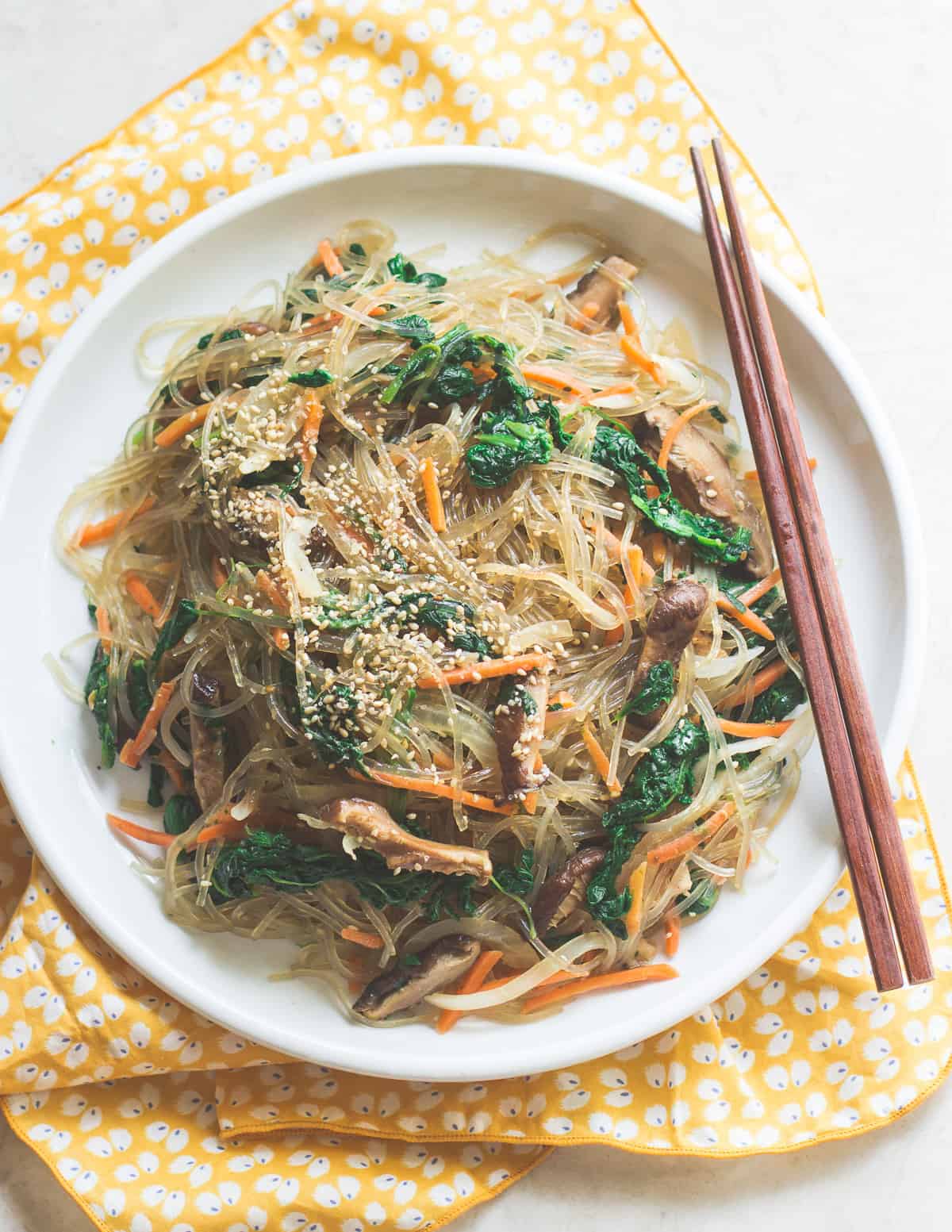
Vegetarian Japchae Recipe
I will forever associate this traditional Korean noodle dish with my mom who was known as the “japchae queen” amongst our community growing up.
And I can confidently say that you seriously haven’t had japchae until you’ve tried my mom’s! It is simply the best, and I absolutely refuse to order it at Korean restaurants.
I’ve asked her to write down the recipe so I can include it in my “Beloved Family Recipes” collection to pass down to my children someday, but she always tells me to move by feel, taste as I go, and as for the seasoning, just eyeball it!
Said like a true Korean home cook.
So the best I could do is to watch her every move like hawk as I have been doing for many years. And because I love you guys, I measured the seasoning to the best of my ability, but I do have to agree with mom on this one:
These kinds of dishes turn out best when you move by feel, allowing your taste buds to guide you. In other words, don’t make this when you are sick :).
Ingredients
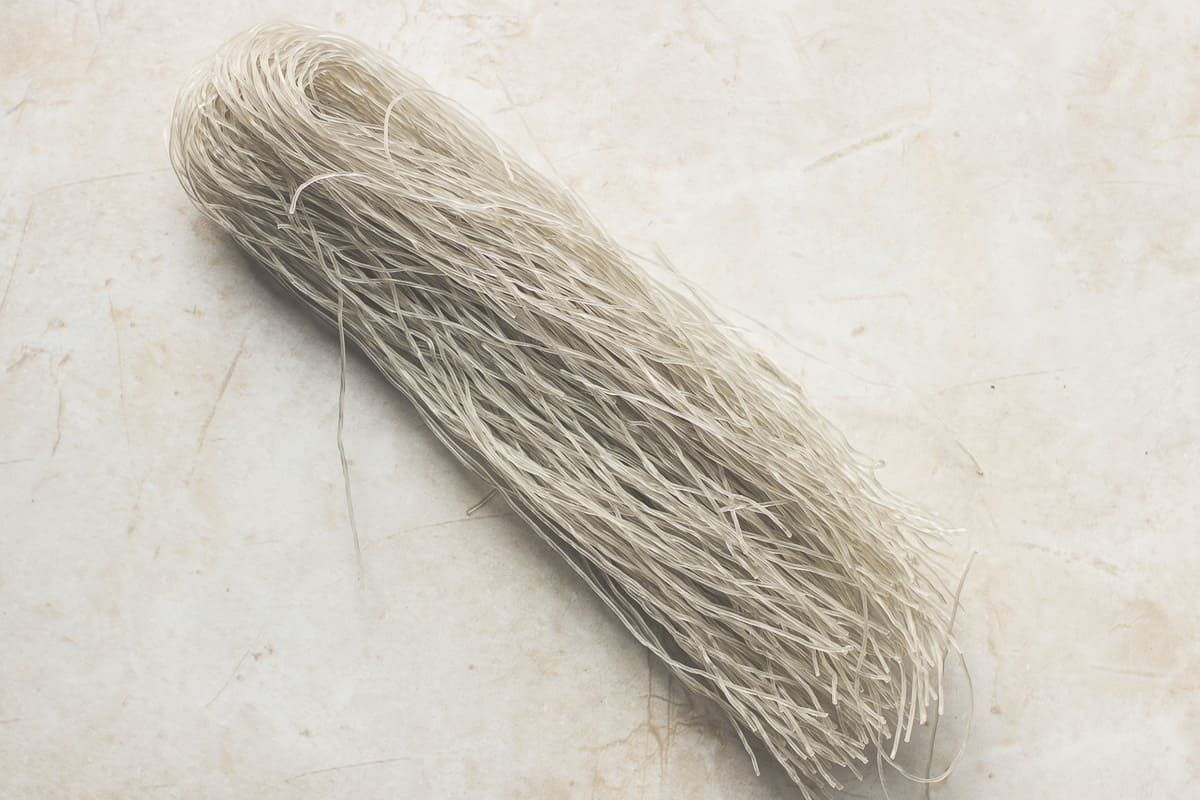
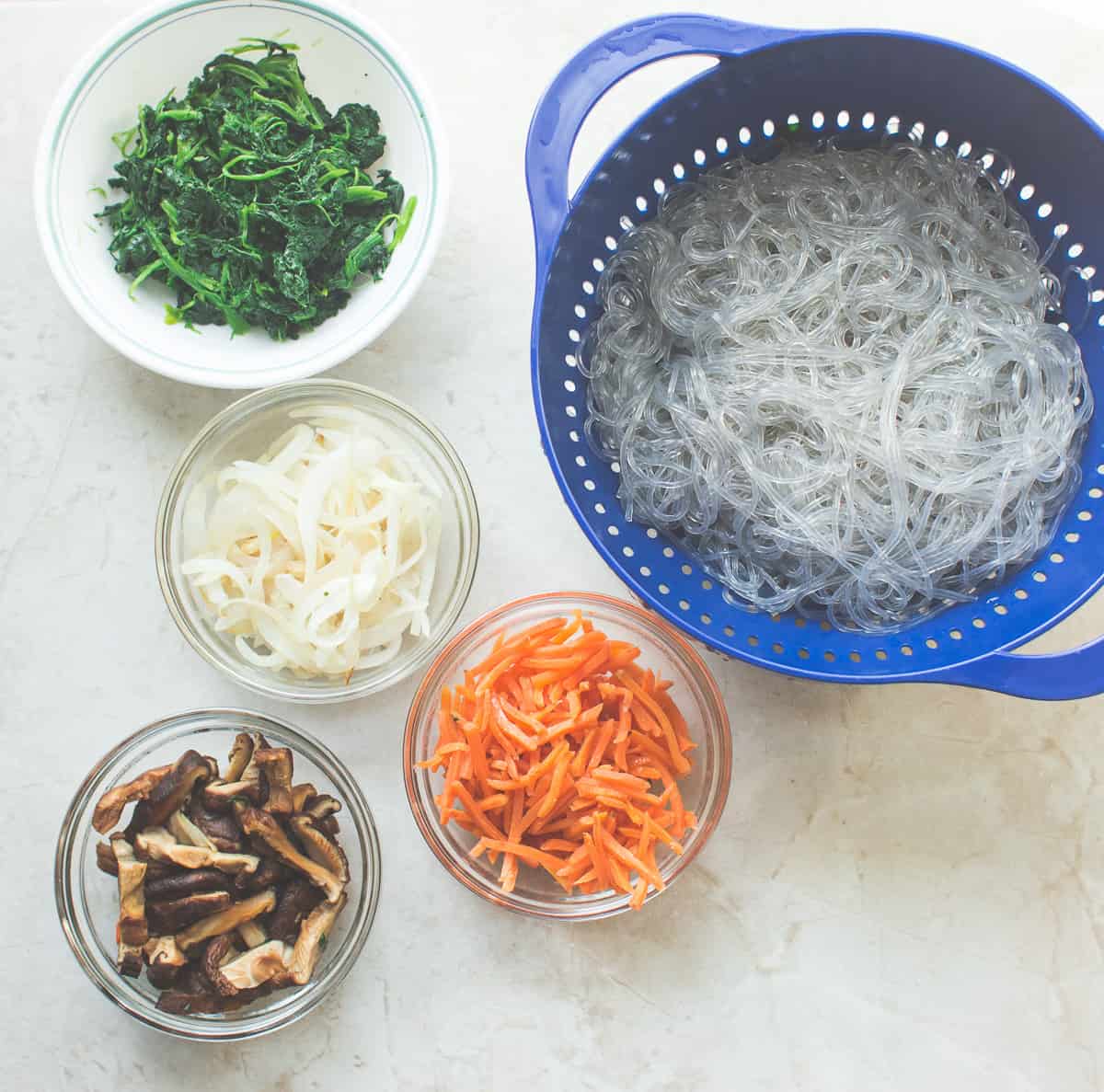
- Korean sweet potato noodles – also called dangmyeon, Korean vermicelli or glass noodles. Made from sweet potato starch, these noodles, once cooked, are chewy and springy. You will easily find them at Asian grocery stores.
- Fresh vegetables – While you can add whatever veggies you wish, the most popular ones include onion, carrots, and red bell peppers.
- Shiitake mushrooms – this is a must in my opinion as it provides a meaty flavor to the dish.
- Japchae sauce – a combination of soy sauce, sesame oil, and brown sugar or honey to create the perfect balance of sweet and savory notes
Step-by-Step Instructions
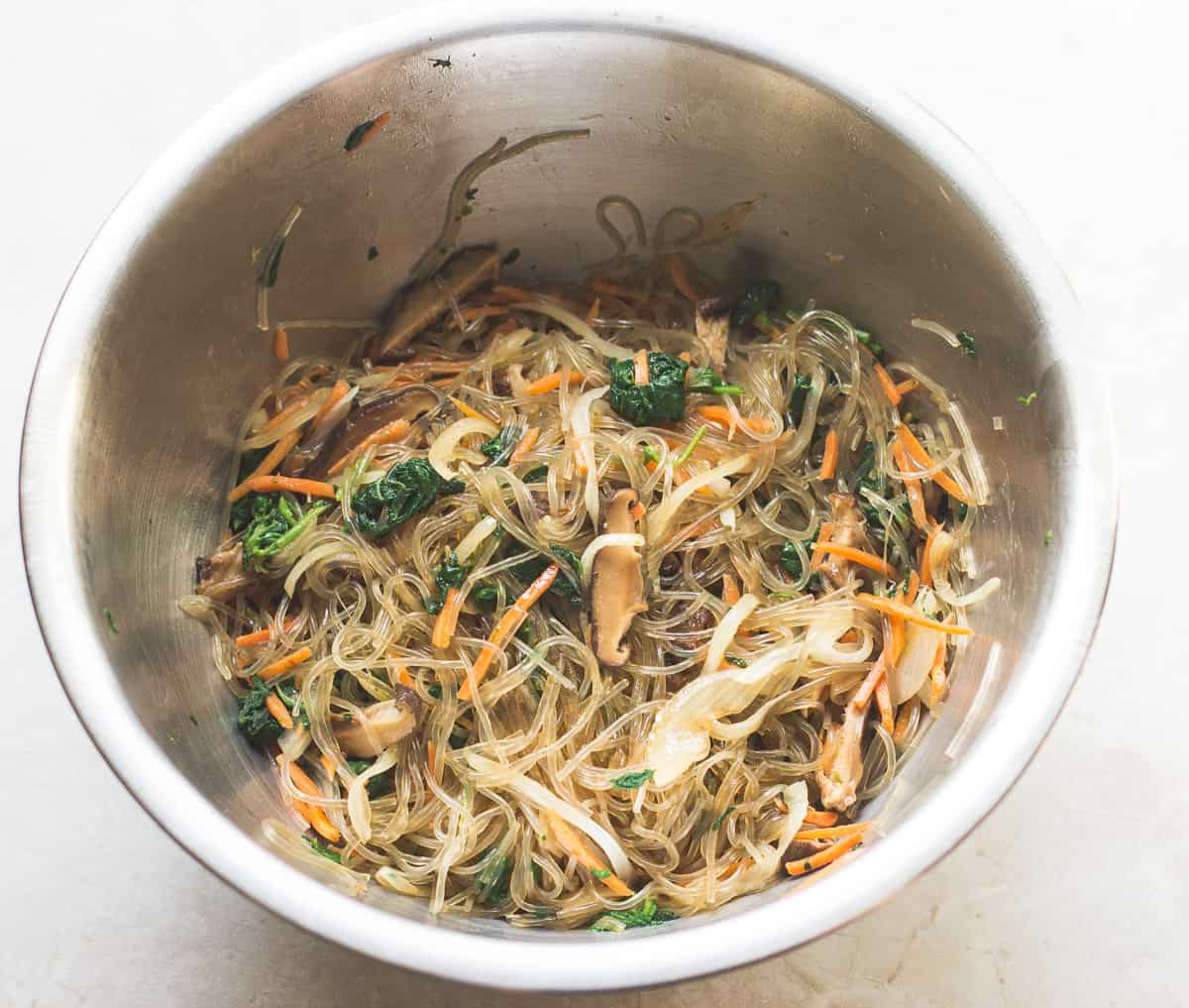
While making Korean stir-fried glass noodles may seem complex due to the number of steps involved, once you understand the cooking process, it becomes relatively straightforward to make.
It primarily involves cooking glass noodles, stir-frying vegetables, and combining them with japchae sauce.
- Cut all the ingredients into thinly sliced/julienned strips. I love to use my mandolin for this as it makes the process go super quick.
- Bring a large pot of water to a boil. Add spinach and cook for a few seconds, until the spinach has wilted. Remove immediately and rinse in cold water. Don’t discard the water. You’re going to use it for the noodles.
- Drain and gently squeeze out all the water from spinach. Form into a ball, then using kitchen shears, cut it in half. Combine spinach with 1 teaspoon of sesame oil and pinch of salt. Set aside.
- Add noodles to the same pot with boiling water and and cook for 6-8 minutes until softened and chewy. It should NOT be al dente! Drain and rinse under cold water. Using scissors, cut the noodles into shorter lengths, about 8 inches. Toss with 1 teaspoon sesame oil and set aside.
- In a small bowl, mix soy sauce, sugar, and sesame oil together until sugar dissolves. Set aside.
- Heat 1 teaspoon of neutral oil in a large skillet over medium high heat. Add onion. Stir-fry for about 2 minutes, or until onion is slightly translucent. Remove from pan.
- In the same skillet, repeat the whole process with carrots and mushrooms.
- In a large mixing bowl, add the cooked noodles and all the vegetables. Pour in the japchae sauce. Using your hands toss until all the ingredients are coated evenly with the sauce. Taste and season with salt, if needed. Add the toasted sesame seeds and a drizzle of sesame oil. Transfer to a large plate and enjoy immediately.
Tips for Success
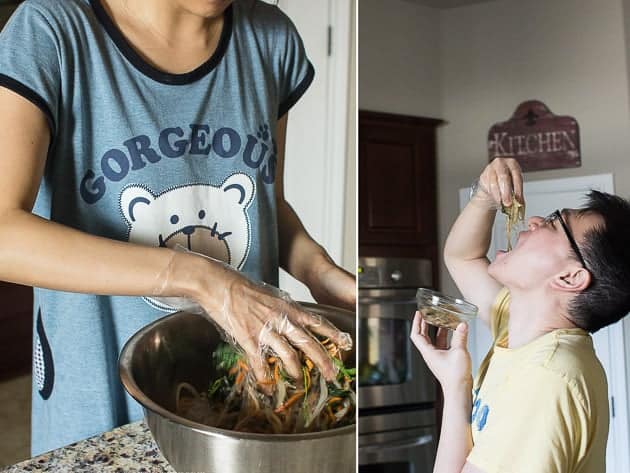
- Don’t overcook the vegetables. You want them to be tender-crisp in texture as it adds a great contrast from chewy glass noodles.
- I love sesame oil so I’m quite heavy handed with it, but again, you can decide how little or how much to add.
- Let my recipe serve as a guide. Along with adjusting the seasoning to your liking, You can add other vegetables, like sweet bell pepper, bean sprouts (which my mom often adds), or just keep it really simple with 1 or 2 ingredients.
- One rule that my mom stressed is to cook the colorful vegetables separately so that each and every ingredient retains its maximum flavor, color, and texture without blending with the other ingredients.
Serving Suggestions
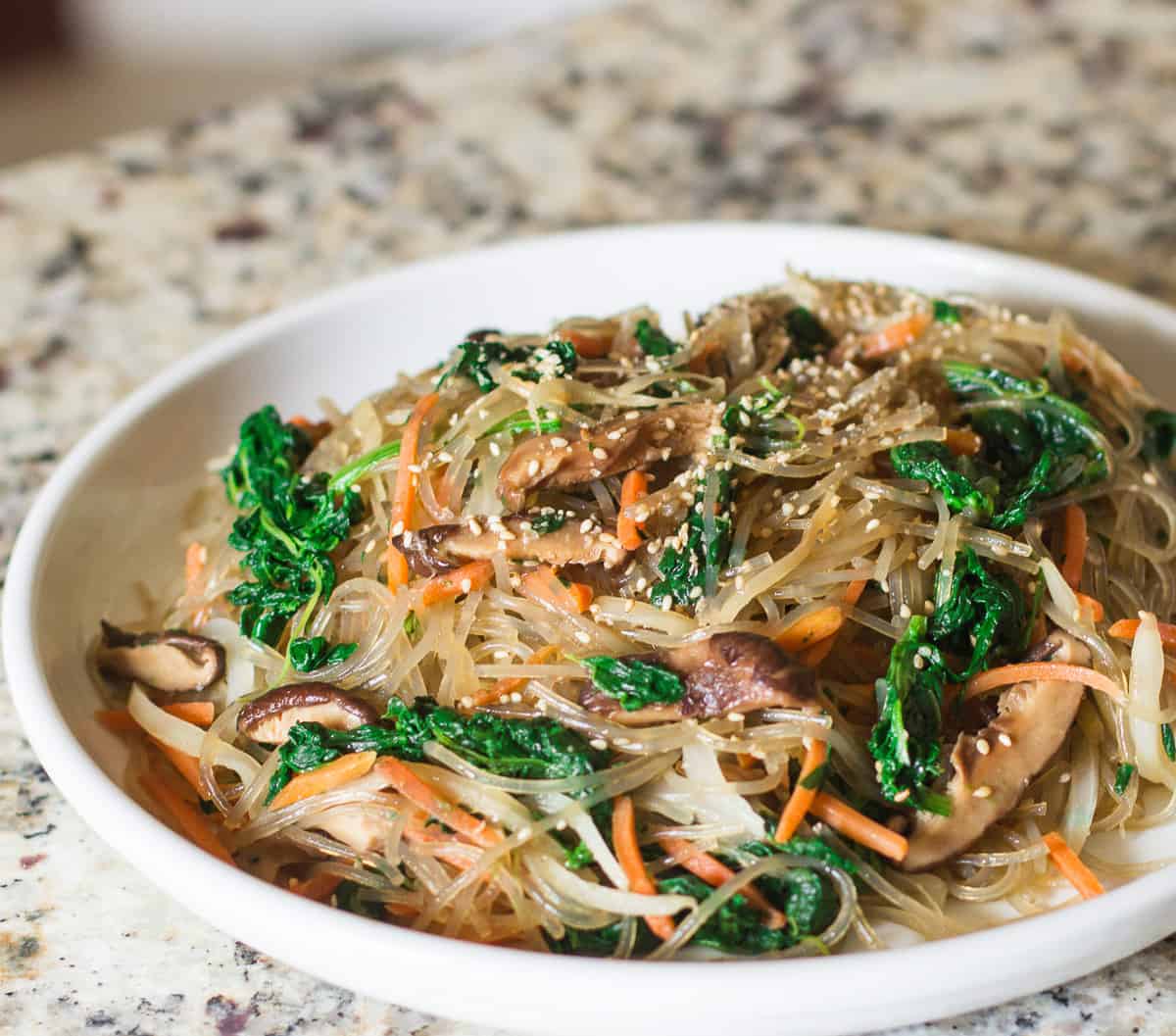
Japchae is a versatile dish that can be enjoyed warm, at room temperature, or cold!
Here are some suggestions:
- Main meal – enjoy with a side of kimchi.
- Side dish – pairs especially well with bulgogi or mandu (Korean dumplings)
- Bento Box – For a well-rounded meal on the go, you can include alongside other items like rice, protein, and additional vegetable sides. Here are more delicious bento box lunch ideas.
- Cold noodle salad – garnish with some fresh herbs like cilantro or green onion. Serve alongside miso tofu!
Storage Suggestions
Transfer leftovers to an airtight container and refrigerate for 2-3 days. Reheat in a pan on the stovetop over medium heat. Add a splash of water to prevent the noodles from drying out and stir-fry until heated through.
You can also microwave. Note that reheated japchae will be slightly softer in texture compared to when freshly cooked. It will still be delicious though!
More Korean Recipes
Did you make this recipe? Leave a rating below and let me know how you liked the recipe! Your feedback means so much to me!

Vegetarian Japchae
Ingredients
- 6 ounces dried Korean sweet potato vermicelli noodles, dangmyeon
- 1 teaspoon sesame oil
- 1 tablespoon neutral oil
- 1 small onion, sliced
- 1 carrot, peeled and shredded (I used a pre-shredded one)
- 6 dried shitake mushrooms, soaked in warm water and cut into matchstick strips
- 1 bunch of spinach
- 4 tablespoons low-sodium soy sauce
- 1 tablespoon brown sugar or honey
- 2 tablespoon sesame oil
- salt
- toasted sesame seeds
Instructions
- In a pot, bring water to a boil. Add spinach and cook for a few seconds, until the spinach has wilted. Remove immediately and rinse in cold water. Don't discard the water. You're going to use it for the noodles.Drain and gently squeeze out all the water from spinach. Form into a ball, then using scissors, cut it in half. Combine spinach with 1 teaspoon of sesame oil and pinch of salt. Set aside.
- Add noodles to the pot and and cook for 6-8 minutes until softened and chewy. It should NOT be al dente! Drain and rinse under cold water. Using scissors, cut the noodles into shorter lengths, about 8 inches. Toss with 1 teaspoon sesame oil and set aside.
- In a small bowl, mix soy sauce, sugar, and sesame oil together until sugar dissolves. Set aside.
- Heat 1 teaspoon of neutral oil in a large skillet over medium high heat. Add onion. Stir-fry for about 2 minutes, or until onion is slightly translucent. Remove from pan.
- In the same skillet, repeat the whole process with carrots and mushrooms.
- In a large mixing bowl, add the noodles and all the vegetables. Pour in the soy sauce mixture. Using your hands toss until all the ingredients are coated evenly with the sauce. Taste and season with salt, if needed. Add the toasted sesame seeds and a drizzle of sesame oil. Serve immediately.

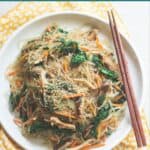
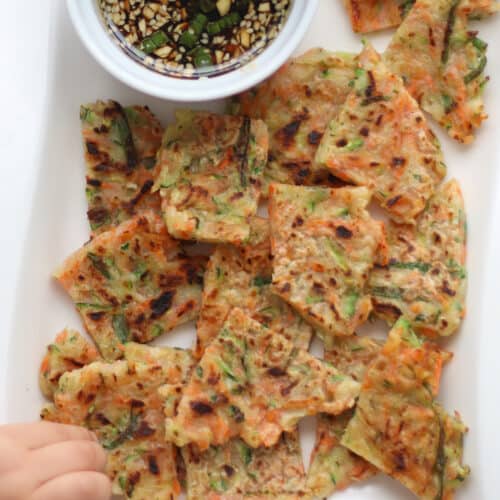
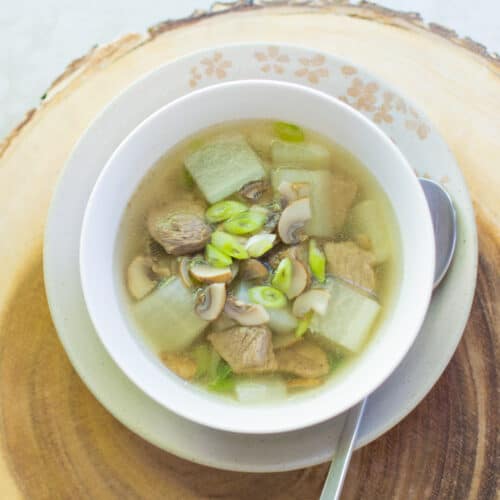
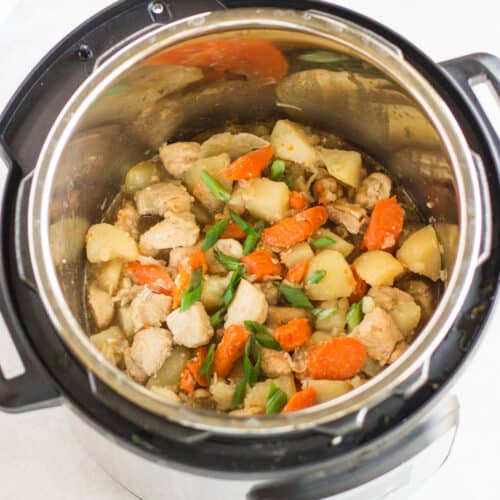
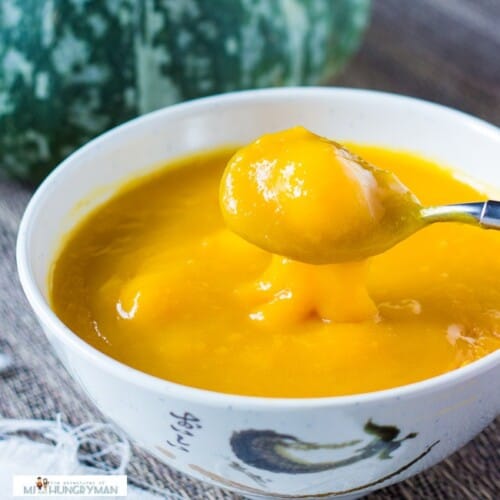
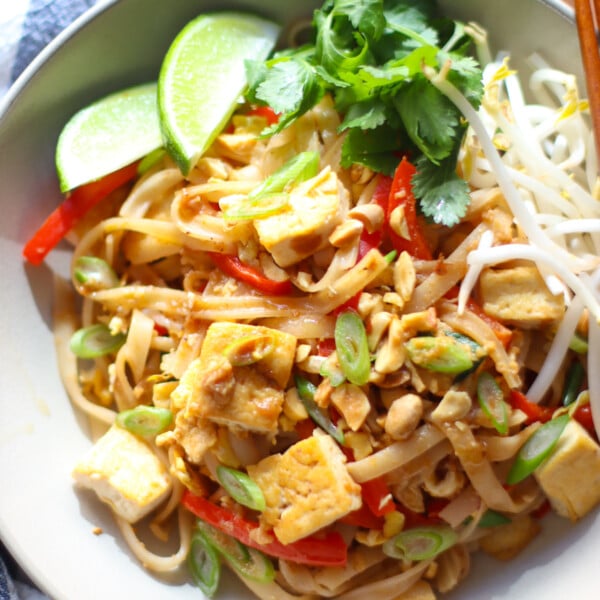












Gamsahabnida! (That’s basically one of a handful of words in Korean I was taught as a kid, much to Halmeoni’s consternation…) I’ve only heard stories of my grandmother’s japchae, but never knew exactly what it was, or even what to look for. This helps put me in the right direction! Daedanhi gamsahabnida! Prosperous and blessed new year to you and your family!
Hi Lauren! You’re very welcome!! Love that you wrote to me in Korean ;). Yes, japchae is def one of the most iconic Korean dishes, and while the technique/method is the same, there’s always a subtle difference in taste depending on who makes it. That’s the mystery that is Korean cooking ;). It’s probably because people don’t really follow recipes…just eyeball everything. Hope you give this dish a try! 😉
Holy moly – I LOVE japchae (although I have to admit, I’ve only ever had it AT a restaurant). I need to come visit your mom so I can have hers;) I think the best recipes are the ones for which people don’t have a recipe written down – they’ve got the taste down pat that they know it can’t fail with a little variation here and there. Lucas and I are definitely going to make this ASAP! Happy belated NY!
Min, I love japchae!! This looks sooo good! one of my faves! My mom says the same thing. . and with all of her Korean food recipes . . they don’t measure anything!!! I guess it’s good that we have to figure it out on our own! 🙂 Happy Lunar New Year!! TGIF!
It must be hard being away from family at times like these…I hope this dish gave you the comfort you were looking for. It certainly sounds amazing!
This is by far my favorite Korean dish. At our local Korean restaurant it’s all I ever order. Thanks for the great recipe.
Happy New Year!
This is one of my all time favourite dishes- My friend Jae’s mum makes this and always gives me leftovers because I eat them by the bucketful…cold.
Pinned!
I LOVE Japchae! Happy New Year and I can’t wait to try your recipe.
Such a fun dish, and even better cooked in PJs!!! Love your mom’s advice too 🙂 Happy Lunar New Year to you and Hungryman!!
Thank you Min for the nice recipe.